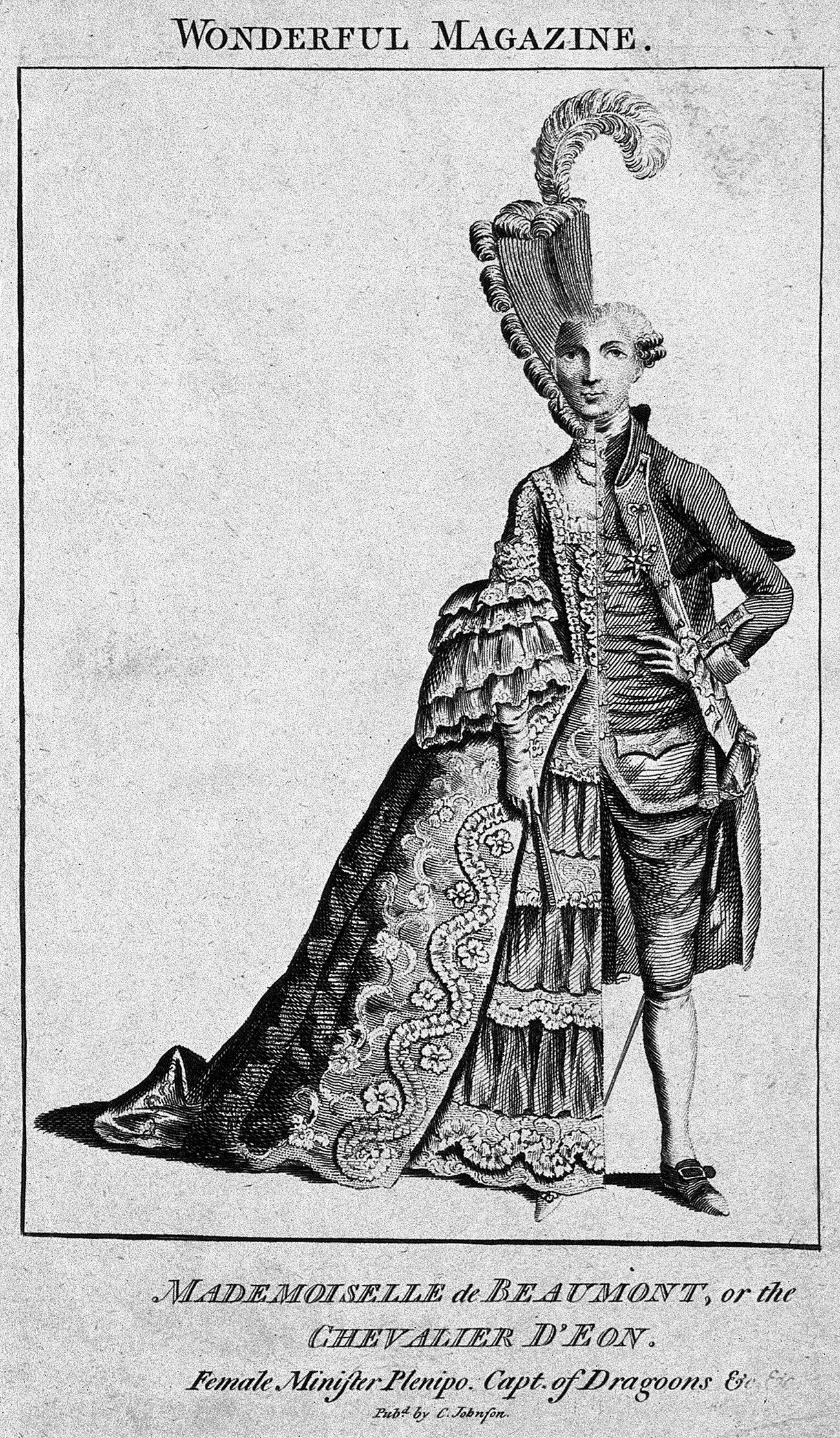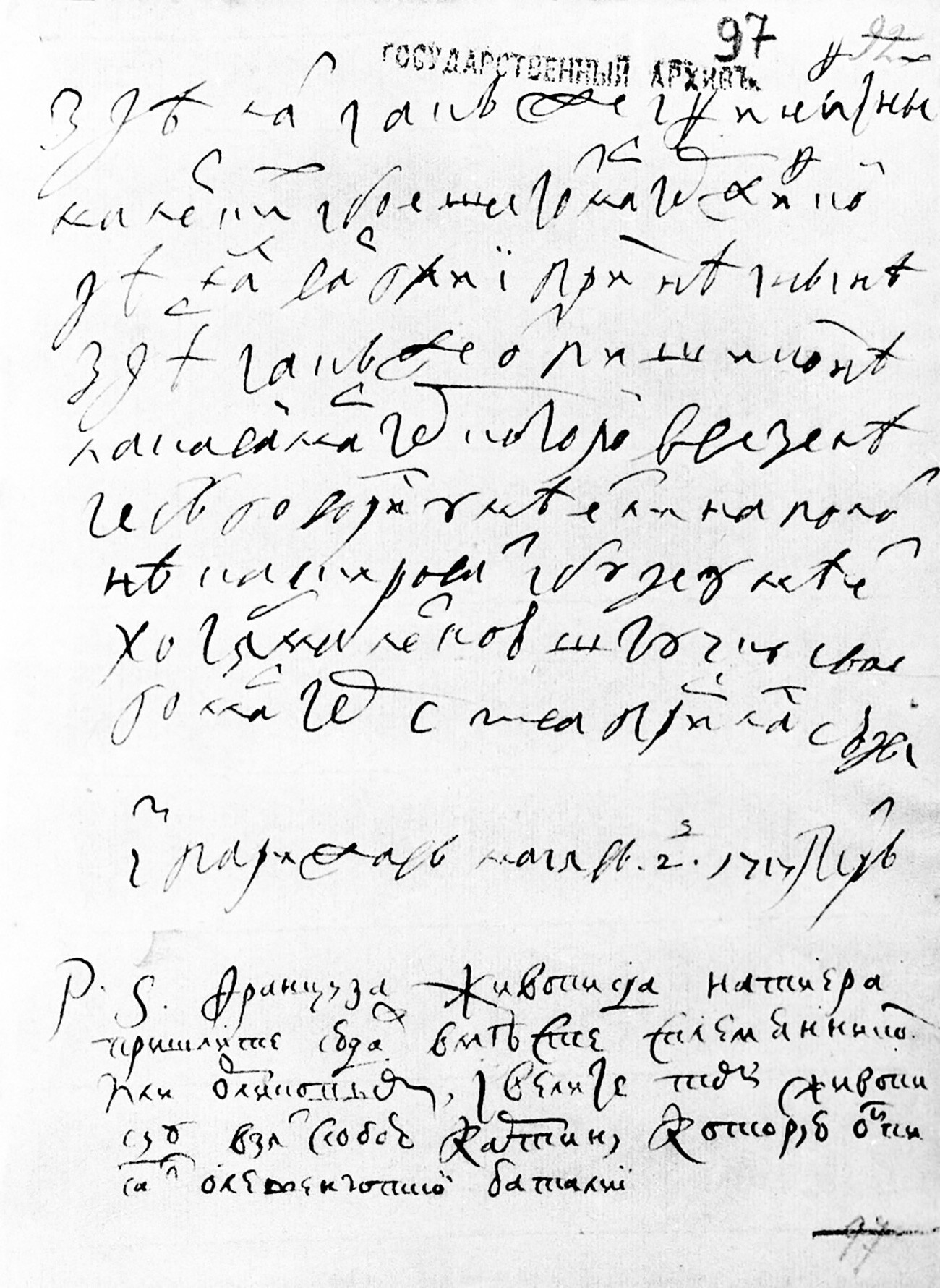
Peter the Great died before he could appoint an heir and left no will. But in 1836 in France, a text of the allegedly lost testament of Peter the Great was published.

Chevalier d'Éon, aka Charlotte d'Éon de Beaumont, who allegedly 'discovered' the 'testament.' Caricature from the London Magazine, 1777
Public domainThe testament, the publishers claimed, was found by Chevalier d'Éon in the secret archives of Elizabeth Petrovna in 1757. It is interesting that Charles d'Éon de Beaumont (1728-1810), a soldier and a spy, who, in 1755, really visited St. Petersburg, spent half of his life pretending to be a woman.

Peter the Great's fast handwriting (above), compared to his more decipherable neat handwriting (below)
Archive photoThe published document was titled ‘A Copy of the Plan of European Domination’ and contained 14 paragraphs. The will was in the form of a to-do list for the emperor’s heirs and successors. Among other things, the tsar allegedly ordered them to:
In general, the text recommends Peter's successors to conquer the entire known European and Asian world. This "testament", of course, did not correspond to the form of will and testament accepted in the Russian Empire. It did not contain any orders about the property and the throne, which in itself indicates its falsity. Nor did it contain anything on relations with the Netherlands and China, which the real Peter deemed to be highly important.
READ MORE: Debunking 5 myths about how St. Petersburg was built
Nevertheless, the "testament" was republished many times and was actively used to prove the "real aims of the Russians" during the Crimean (Eastern) War. Although its forgery was proven in Russia in 1877 in an article by historian Sergei Shubinsky, the “testament” continued to resurface in connection with Russia – it was published again during World War I and even translated into Persian.
If using any of Russia Beyond's content, partly or in full, always provide an active hyperlink to the original material.
Subscribe
to our newsletter!
Get the week's best stories straight to your inbox